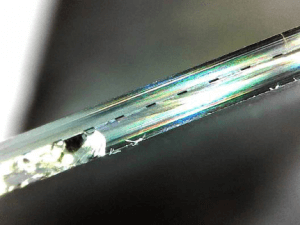Summary
Superconducting quantum bits, or qubits, use circuits made from superconducting materials to harness quantum mechanical states. These devices contain many atoms, but can behave as simple, controllable qubits. We are building technologies for the control and measurement of superconducting qubits to enable the first demonstration of an extensible, medium-scale quantum processor. Our approach includes the development of multilayer architectures where qubit and wiring circuitry are fabricated on different chips that are bonded together by means of thermocompression bonding technologies. This will make it possible to address qubits on a two-dimensional lattice on the order of 100 qubits. Implementing a two-dimensional array of superconducting qubits will allow for the realization of quantum-error correction, a critical step on the way to a fully scalable architecture. Through this work we also hope to study the loss mechanisms that limit the coherence time of superconducting qubits.

Figure 1. Two chips bonded with indium forming a tunnel for superconducting qubits (credit C.R.H. McRae and M. Mariantoni 2017).
Related Content

Portable Quantum Dot Measurement System
Summary Detecting heavy metals in water is essential to ensure clean drinking water and appropriate regulatory decisions following an accident (e.g., a spill) or an emergency. Traditionally, high-sensitivity detection of heavy metals requires bulky and costly (to purchase and operate) lab-based instruments. We propose developing a palm-sized, element-specific, highly-sensitive, battery-operated, smartphone-controlled system for on-site measurement […]
July 21, 2022
Line-Scanning optical coherence tomography system for in-vivo, non-invasive imaging of the cellular structure and blood perfusion of biological tissue
Summary Optical coherence tomography (OCT) is an optical imaging method that allows for in-vivo, non-invasive imaging of the structure and vasculature of biological tissue. Commercially available, clinical OCT systems utilize point-scanning method to acquire volumetric images over a large surface with typical frame rates of ~ 30 frames/ second. Since living biological tissue is constantly […]
August 27, 2019

Ultrafast Dynamical Studies of Valley-Based Qubits
Summary As monolayers, transition metal dichalcogenides (TMDCs) – such as tungsten diselenide (WSe2) – become direct-bandgap semiconductors capable of emitting light. Compared to conventional direct-bandgap semiconductors, such as III-V semiconductors like GaAs, excitons (quasiparticles made of an electron hole bound with an electron) and single-layer TMDCs (SL-TMDCs) have much stronger binding energy. Excitons and […]
June 29, 2018

Towards large area, resonant quantum tunneling diodes by continuous Langmuir transfer of exfoliated 2D materials
Summary Atomically thin 2D materials constitute promising building blocks for quantum devices due to their exotic, layer-dependent electronic properties. The ability to stack these materials in alternating layers enables heterostructures to be built in almost limitless combinations and over small enough length scales to observe quantum phenomena. So far though, practical implementation of devices based […]
April 1, 2020

